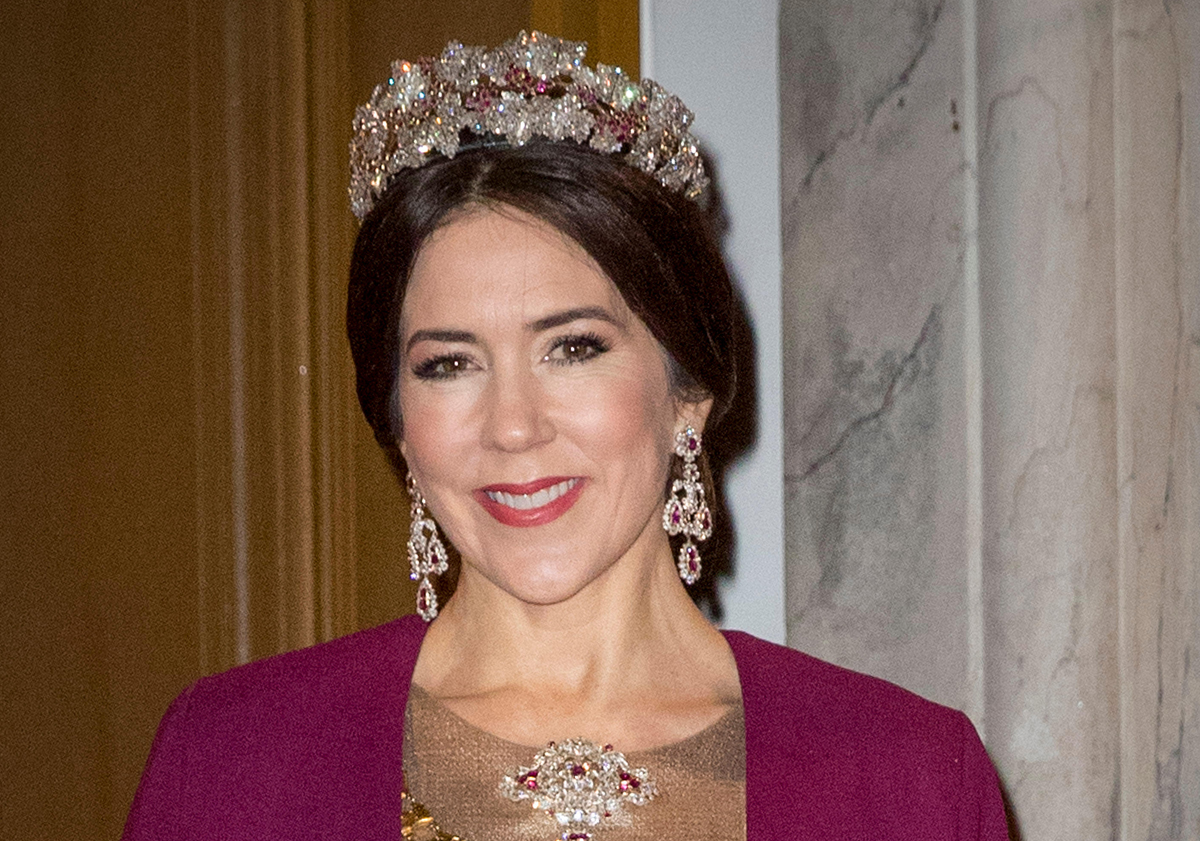
On Sunday, Queen Margrethe II of Denmark will hand the throne over to her elder son, Crown Prince Frederik. At the same time, her daughter-in-law, Crown Princess Mary, will become the custodian of three dazzling Danish royal tiaras—and an entire collection of crown jewels.
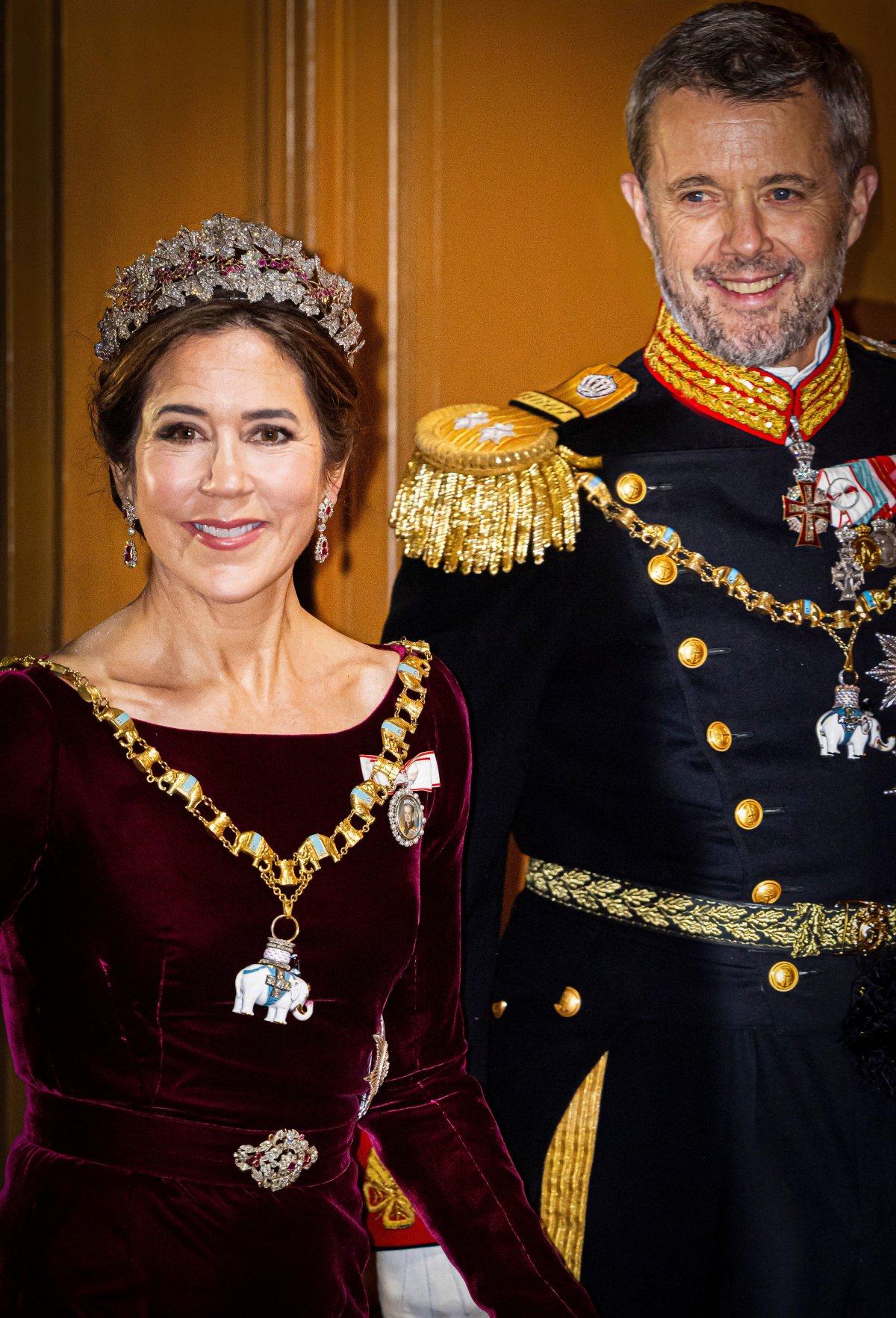
Since her royal wedding in 2004, Crown Princess Mary of Denmark has been sparkling in four gleaming tiaras for gala occasions. The grandest of these is the tiara from the Danish Ruby Parure, inherited by her husband from his grandmother, Queen Ingrid. Mary also has the use of three more tiaras. Her diamond wedding tiara, a gift from Queen Margrethe II and Prince Henrik, is convertible and can be worn as a necklace. Mary also had a second pearl setting of the tiara made about a decade after her wedding. She acquired her Edwardian Tiara (also a convertible piece) from an antique auction, and she has the exclusive right to wear Ole Lynggaard’s Midnight Tiara, designed with her Australian heritage in mind.
But on Sunday, Mary’s jewelry collection will be enlarged exponentially. As Queen of Denmark, she will be the only woman in the realm who will wear jewels from two special collections: the Danish Royal Property Trust and the Danish Crown Jewels. She’ll find three new tiaras ready for her use in those caches of jewelry.
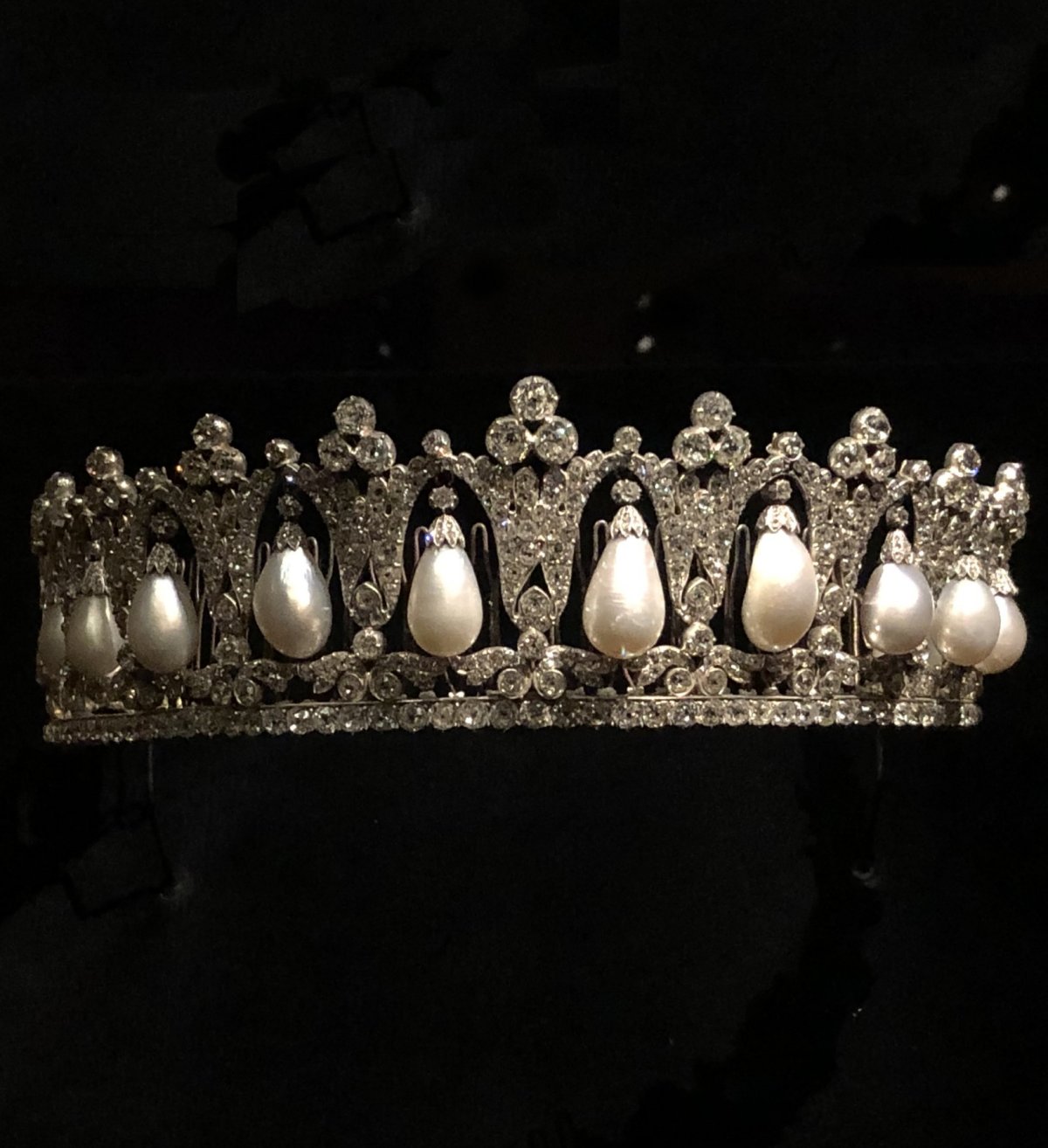
The first, and perhaps grandest, of the new tiaras that Mary will wear is the Pearl Poiré Tiara. Made in 1825, it was a gift to Princess Louise of Prussia on her marriage to Prince Frederik of the Netherlands. They were the grandparents of Queen Lovisa of Denmark, who brought the tiara and its matching brooch to Copenhagen in 1871. The tiara features a series of gorgeous pear-shaped pearl drops suspended from a diamond frame. The pearls sway softly within the frame as the wearer moves.
(Note that the tiara photographs in this article were generously shared with me by one of our lovely readers, Kristina. Please join me in thanking her for allowing us to enjoy her photographs!)
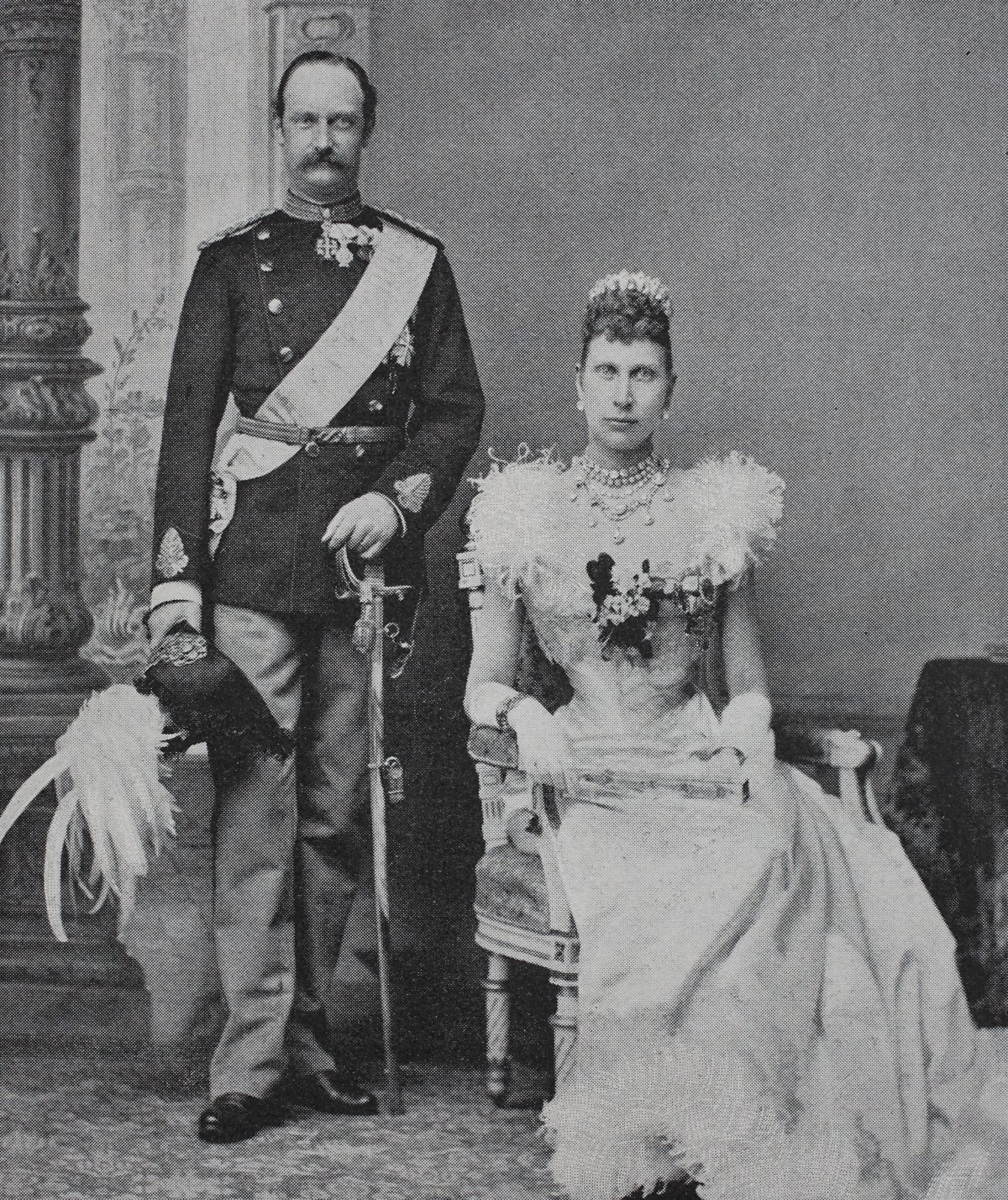
Here’s a look at Queen Lovisa wearing the tiara and brooch, plus the diamond and pearl necklace she received as a wedding present from the Khedive of Egypt, around the time of her husband’s accession to the throne. Lovisa made a married parure of the necklace, tiara, and brooch, plus another pearl cluster brooch that she received as a wedding gift from Emperor Alexander III and Empress Marie Feodorovna of Russia. Later, two of the necklace’s pendants were used to make a matching pair of earrings to complete the set.
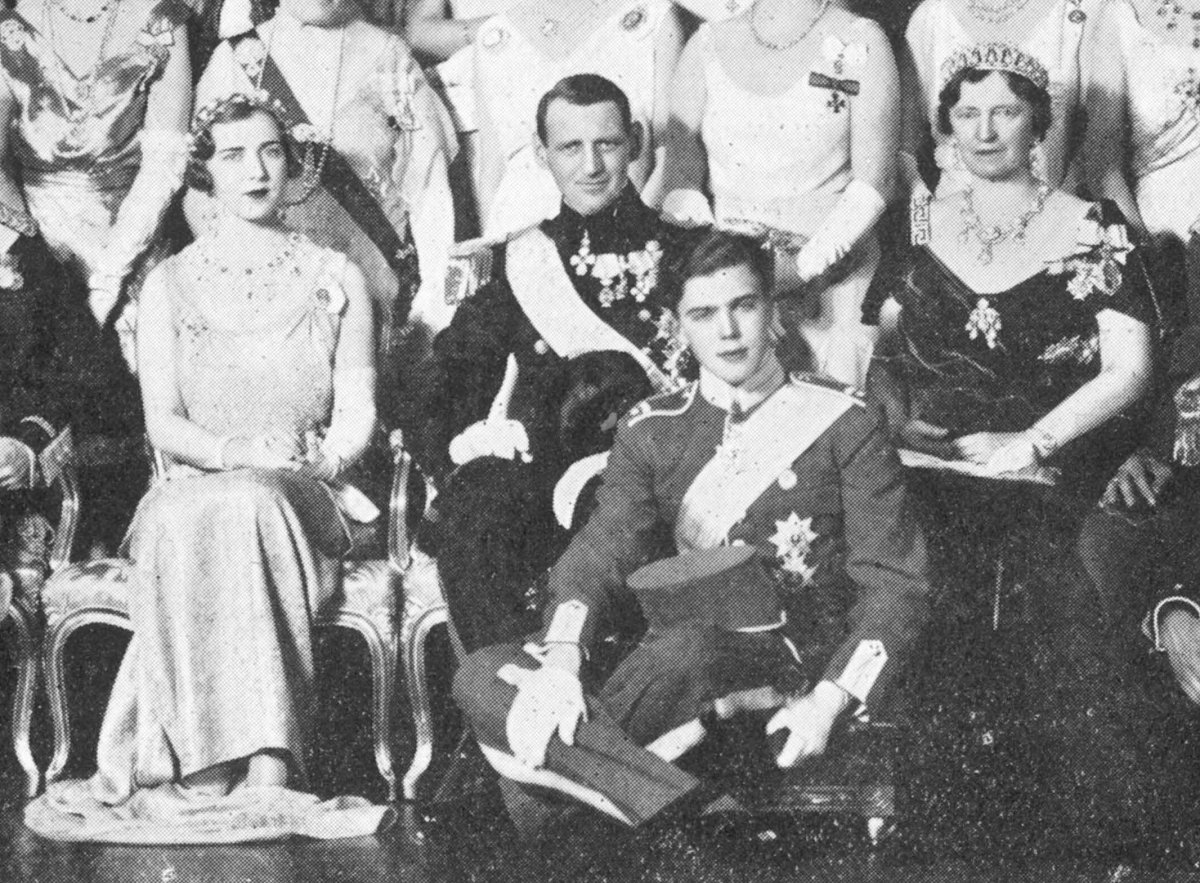
When Queen Lovisa died in 1926, she bequeathed the entire married pearl parure—tiara, necklace, earrings, and brooches—to the Danish Royal Property Trust, the Løsørefideikommis. The jewels remain the property of the royal house (in contrast with the crown jewels, which belong to the state), but they cannot be sold or dismantled. Generally the jewels from the trust are worn solely by the Queen of Denmark (whether that’s the monarch’s wife or the monarch herself). Above, Queen Lovisa’s daughter-in-law, Queen Alexandrine, wears the pearl parure for one of the pre-wedding celebrations for Crown Prince Frederik and Princess Ingrid in Stockholm in 1935.
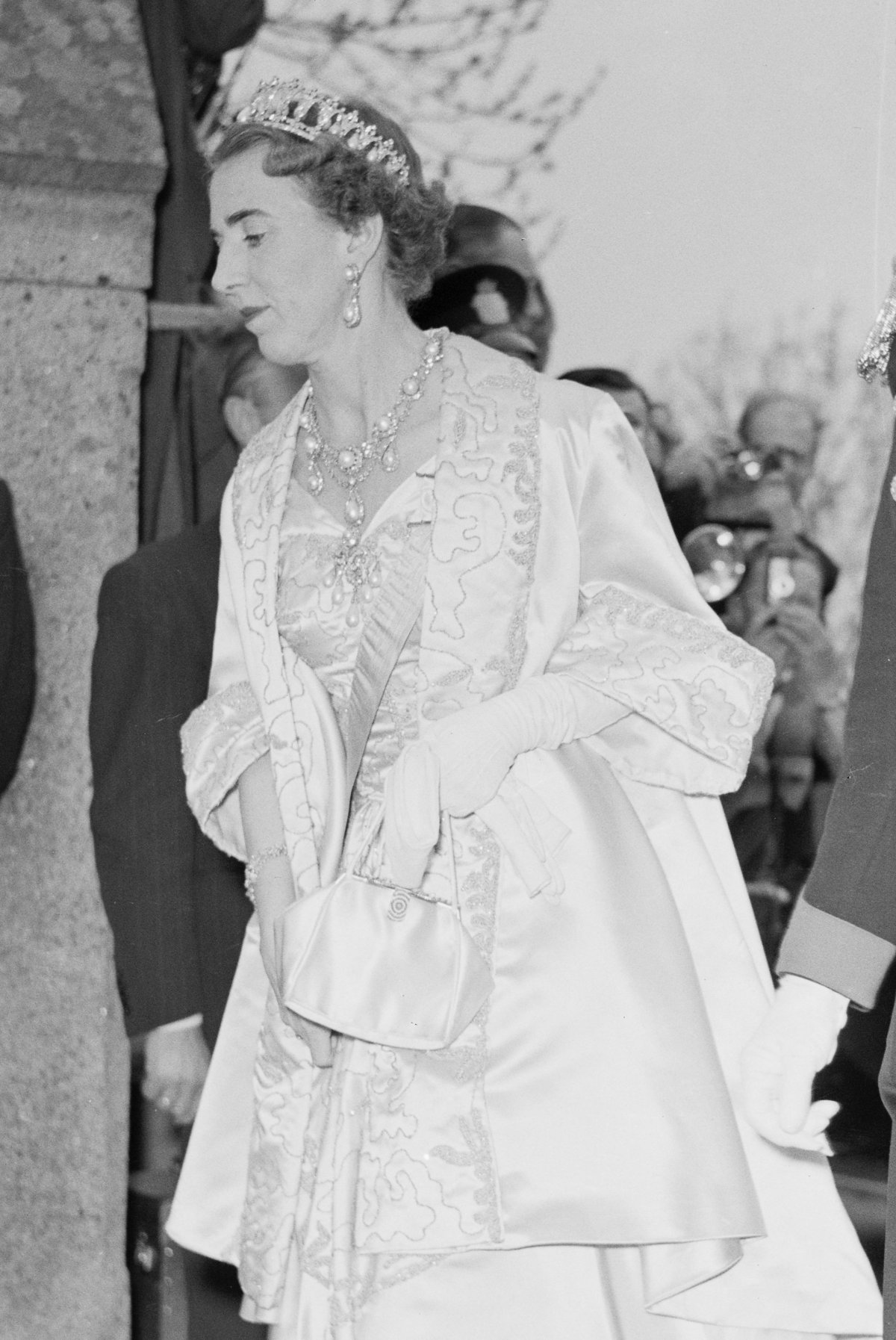
When Frederik succeeded his father as King of Denmark in 1947, Queen Ingrid became the new wearer of the pearls. Above, she wears them for the wedding of Prince Ragnhild of Norway and Erling Lorentzen in 1953. Because the crown jewels cannot be taken outside of Denmark, the pearl parure is often worn by the Queen for the grandest of state occasions in other countries.
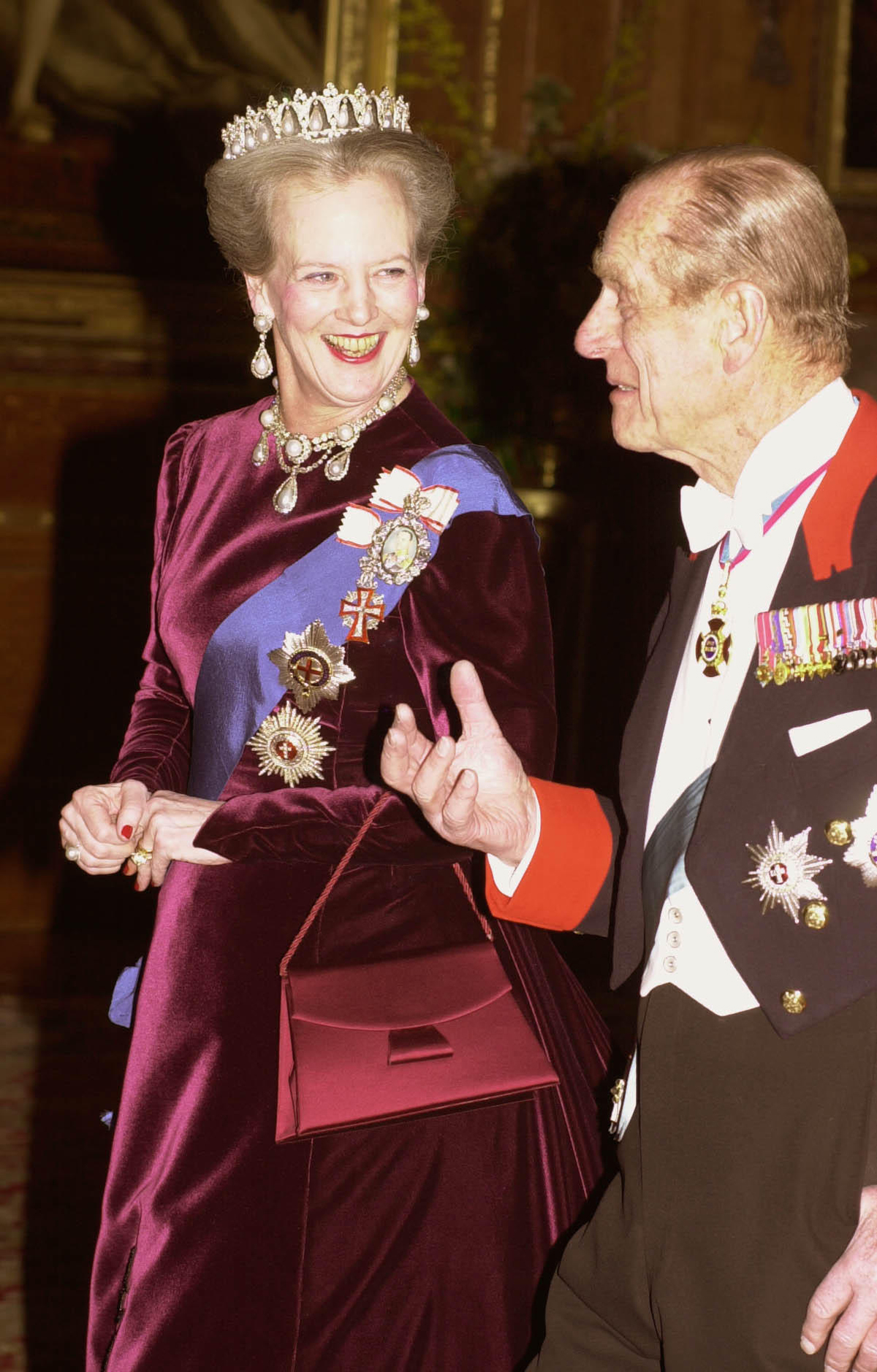
Queen Margrethe II wore the pearls for the first time a few weeks after her accession, for an official portrait taken by Rigmor Mydtskov on February 18, 1972. The tiara and jewels were her most-used suite of royal jewelry during the half-century she has spent on the Danish throne, often chosen for important banquets and gala celebrations. Above, she wears the pearls for state banquet at Windsor Castle during her state visit to Britain in February 2000.
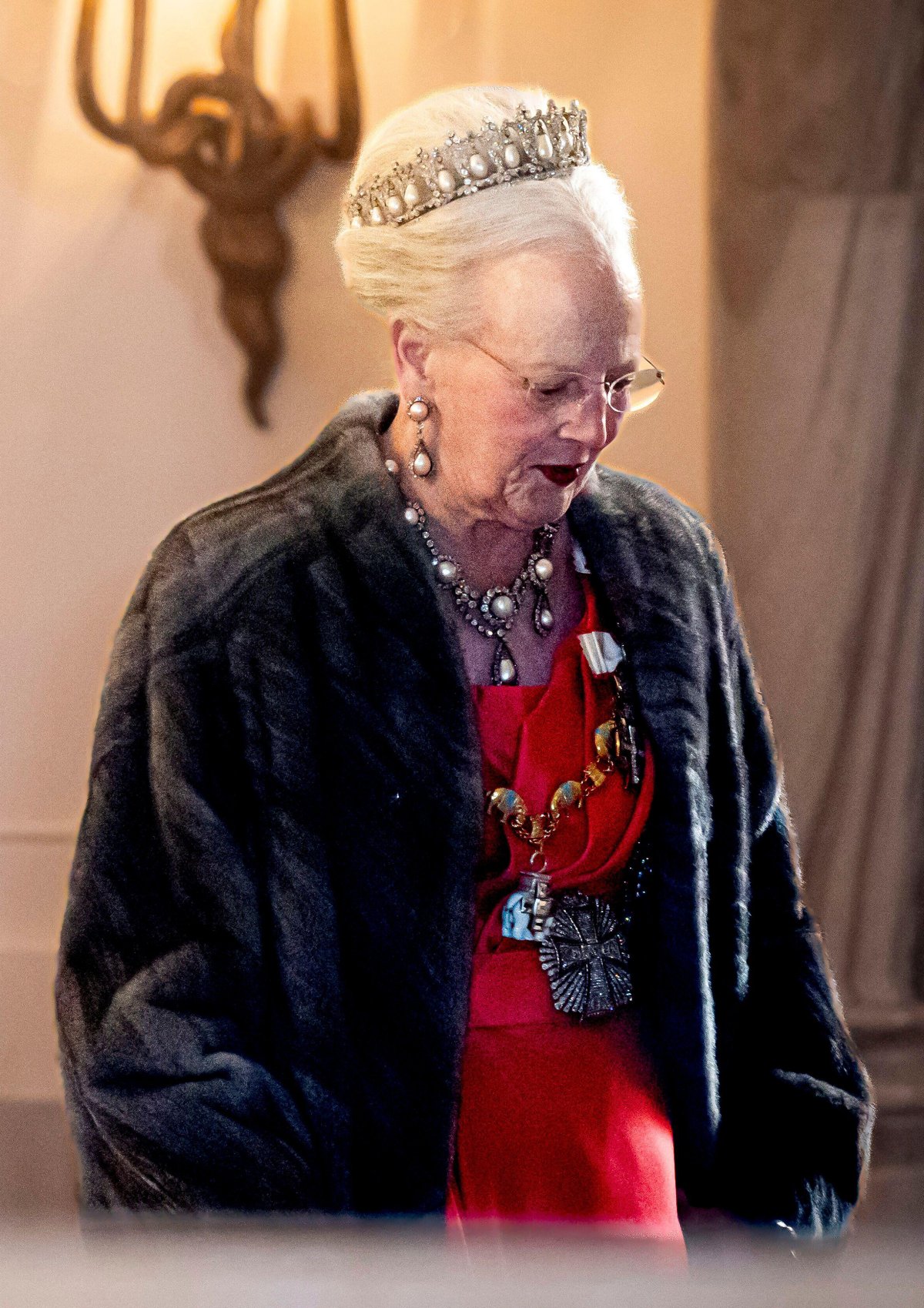
Queen Margrethe made her final public appearances in the Pearl Poiré Parure during the New Year’s levees in Copenhagen last week. She wore the full set on New Year’s Day and the brooch with pendants for the second and third receptions. In a recent documentary on her royal jewels, Margrethe recalled that her mother, Queen Ingrid, handed over the pearl parure to her almost immediately after her accession in 1972. I’d expect that Margrethe will pass the pearls on to Mary equally quickly, and that we’ll see Queen Mary wear them in one of her first official royal portraits after the accession.
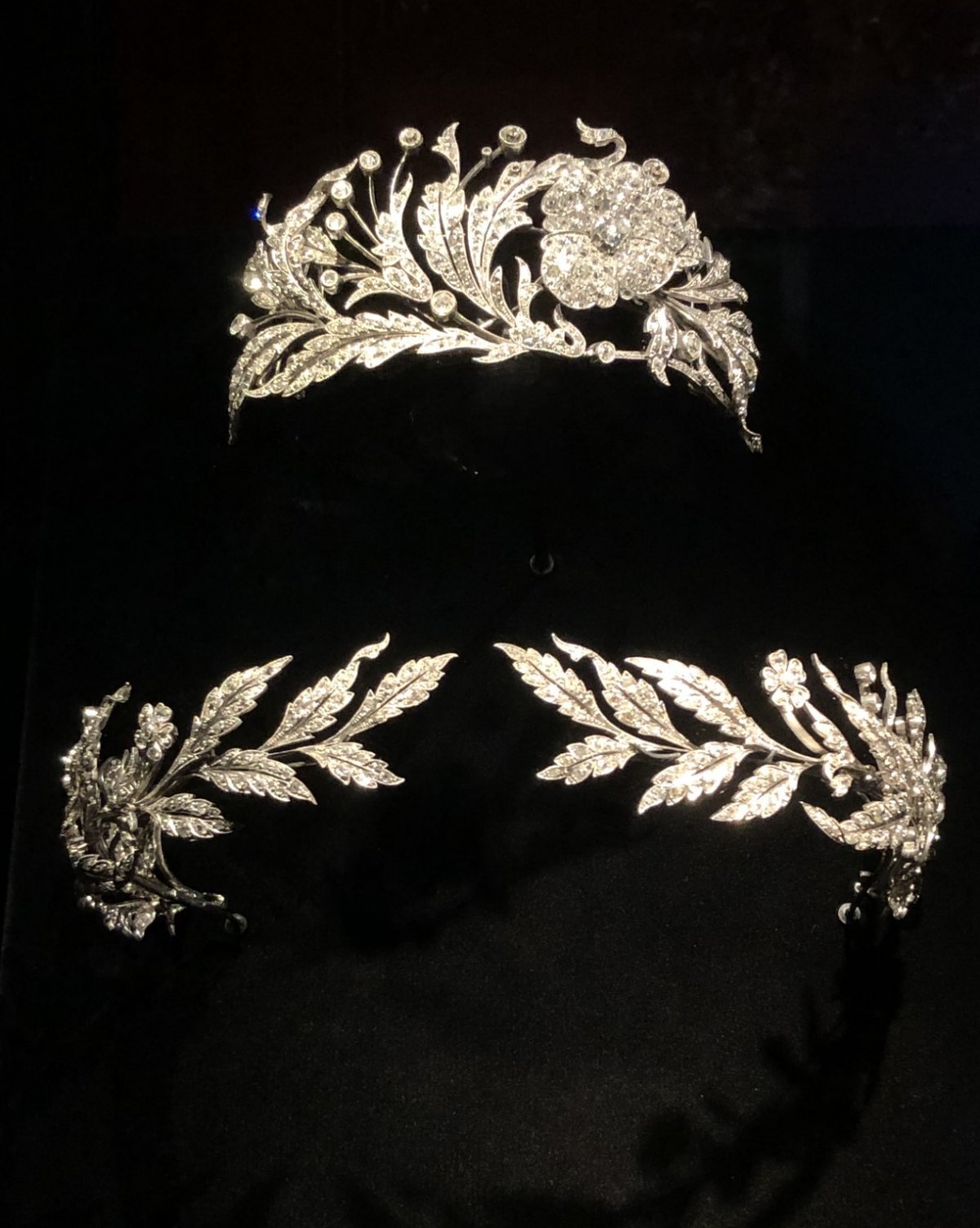
There’s another tiara in the Løsørefideikommis that we’ll likely see Mary wearing for a gala appearance in the coming months. The Danish Floral Aigrette, as we generally call it, has been beloved by both Queen Ingrid and Queen Margrethe II, and now its versatility will be able to shine on the next generation.
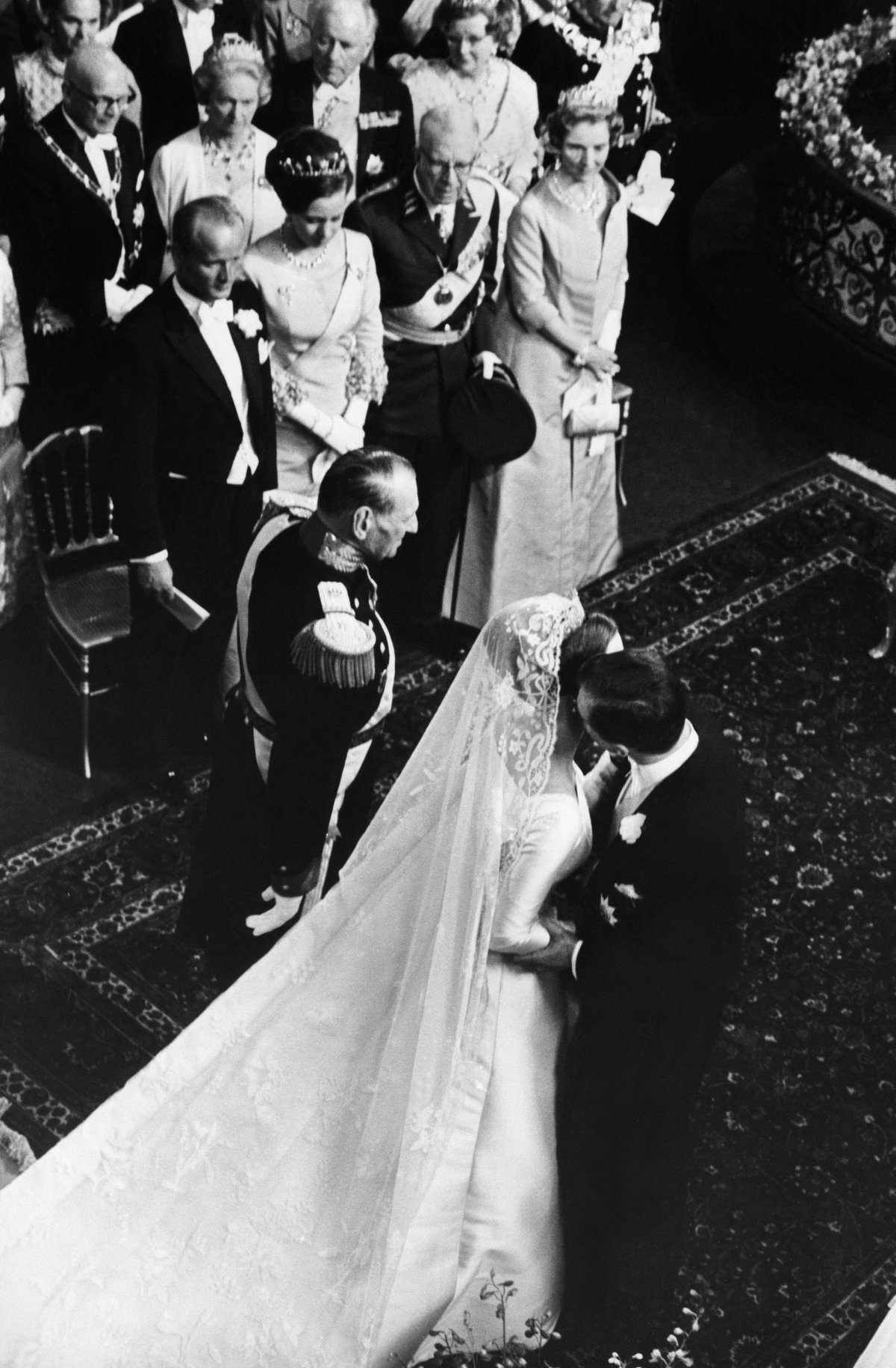
Various provenances for the floral tiara have been bandied about over the years, but the recent book published to coincide with Queen Margrethe’s Golden Jubilee in 2022 clears up some of the information about the piece. Made in the 1950s, it was given by King Frederik IX to Queen Ingrid in 1963. (It still seems likely that the tiara was previously owned by the famous Danish tenor Lauritz Melchior, who sold it at auction that year.) Above, Queen Ingrid wears the tiara for the wedding of their eldest daughter, Crown Princess Margrethe, to Henri de Laborde de Monpezat four years later.
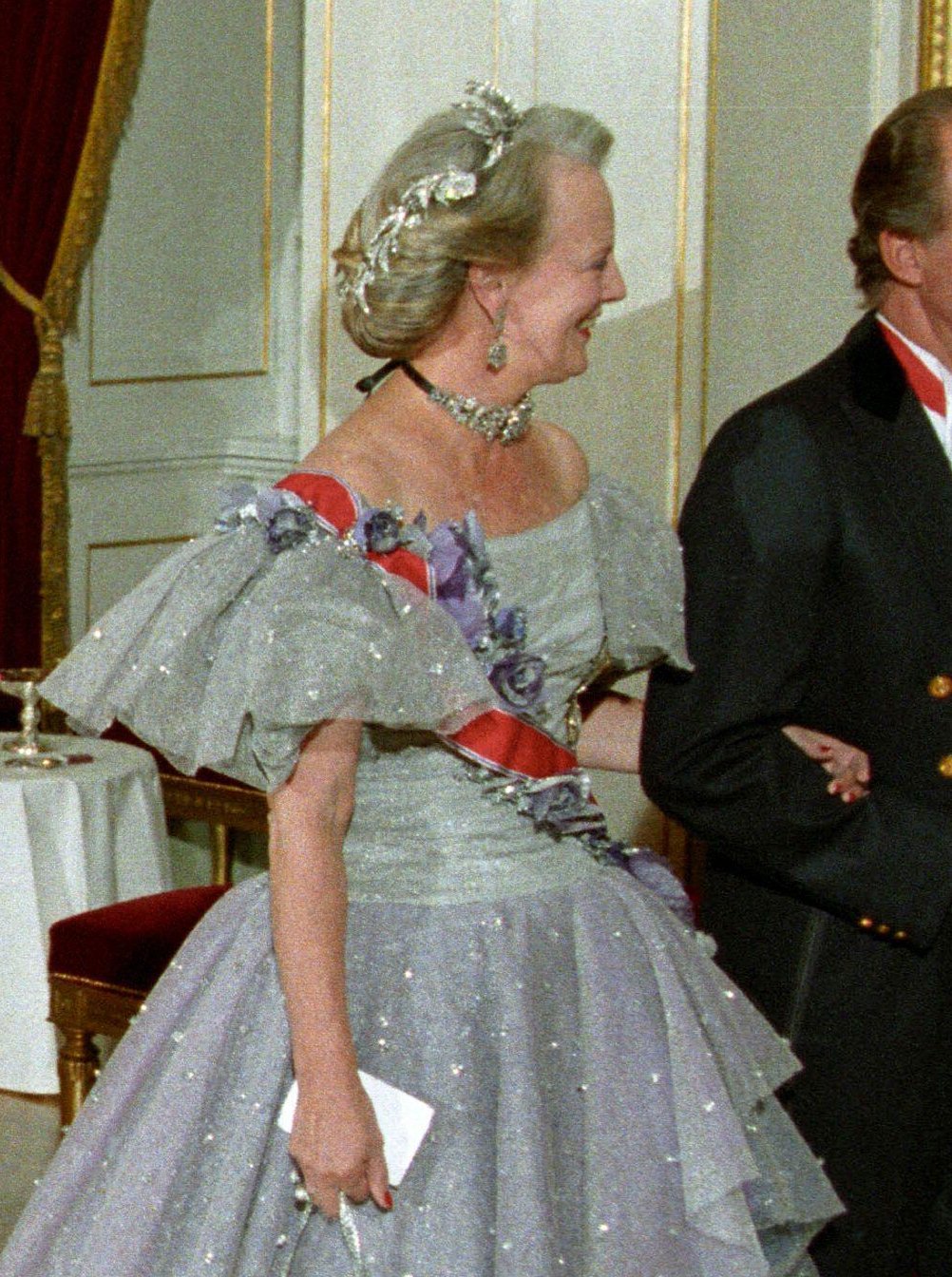
Heidi Laura’s book explains that Queen Ingrid gave the tiara to Queen Margrethe in 1985. She subsequently had the diadem remodeled, changing it from a wreath-style tiara on a traditional frame to a tiara in three separate parts. The alteration offered Margrethe numerous new ways to place pieces of the jewel in her hair for gala occasions.
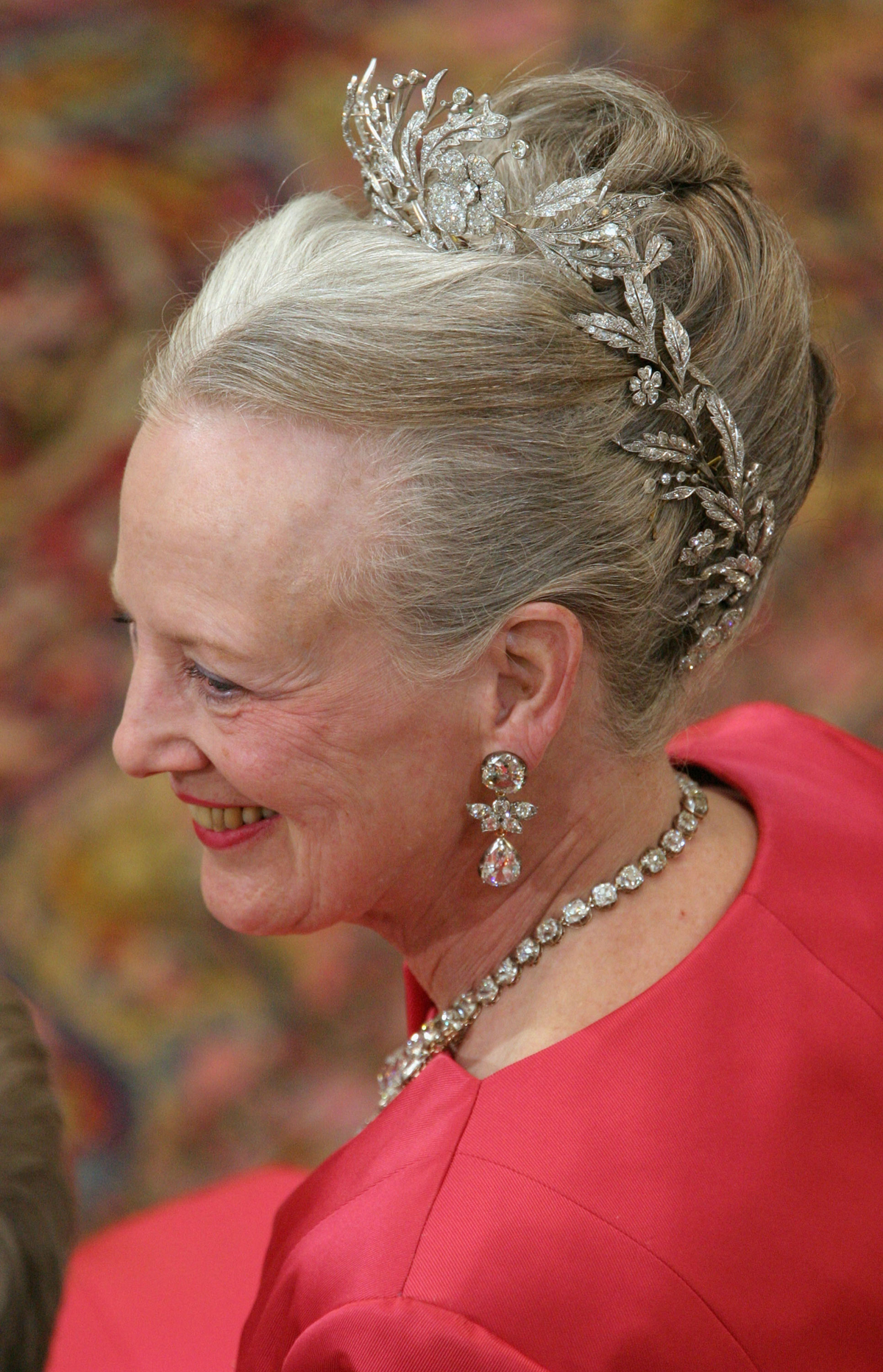
As her mother did before her, Queen Margrethe wore the tiara for the wedding of her heir, Crown Prince Frederik, to Mary Donaldson in 2004. For years, many of us assumed that the tiara was one of Queen Margrethe’s personal jewels. But Heidi Laura’s book includes an interview with Queen Margrethe that revealed new information about the tiara. In the interview, Margrethe explains that her “parents decided that [the tiara] should be included in the trust jewelry.”
I suppose it’s possible that Margrethe could decide to maintain the tiara for her own use after her abdication, because her mother apparently kept this particular jewel from the trust until the 1980s. But as the majority of the jewels in the trust have been worn pretty much exclusively by the Queens of Denmark for a century, as Queen Lovisa intended, I’d imagine that Mary will be the next person that we see wearing the tiara in public.
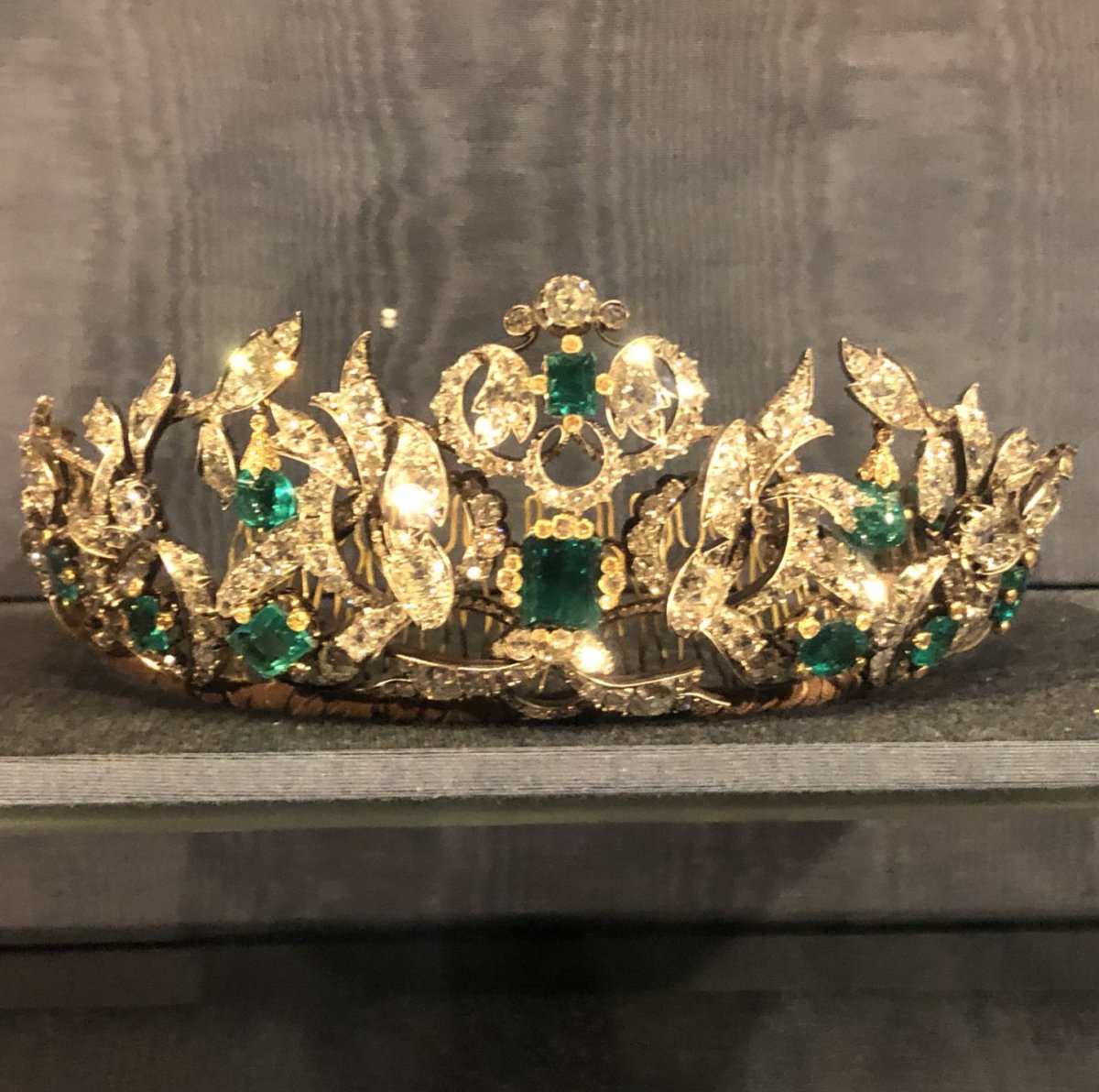
The Danish Royal Property Trust continues to belong to the royal house, but the Danish Crown Jewels belong to the state. Even so, they’re still available for the use of the Queen of Denmark. They’re some of the only crown jewels in the world that are both displayed in a museum and worn for gala events. They cannot be taken outside of Denmark, and they’re intended only to be worn for the most important occasions.
The crown jewel collection includes the actual crowns and regalia that used to be used in the past for Danish coronations. (The monarch in Denmark is no longer crowned.) It also includes four spectacular suites of jewelry, commissioned in 1840 by Queen Caroline Amalie of Denmark. The only tiara featured as a part of the sets is the grand tiara from the Danish Emerald Parure. Though the tiara was made in 1840, it is set with emeralds given by King Christian VI to his wife, Queen Sophie Magdalene, to celebrate the birth of their son (the future King Frederik V) in 1723.
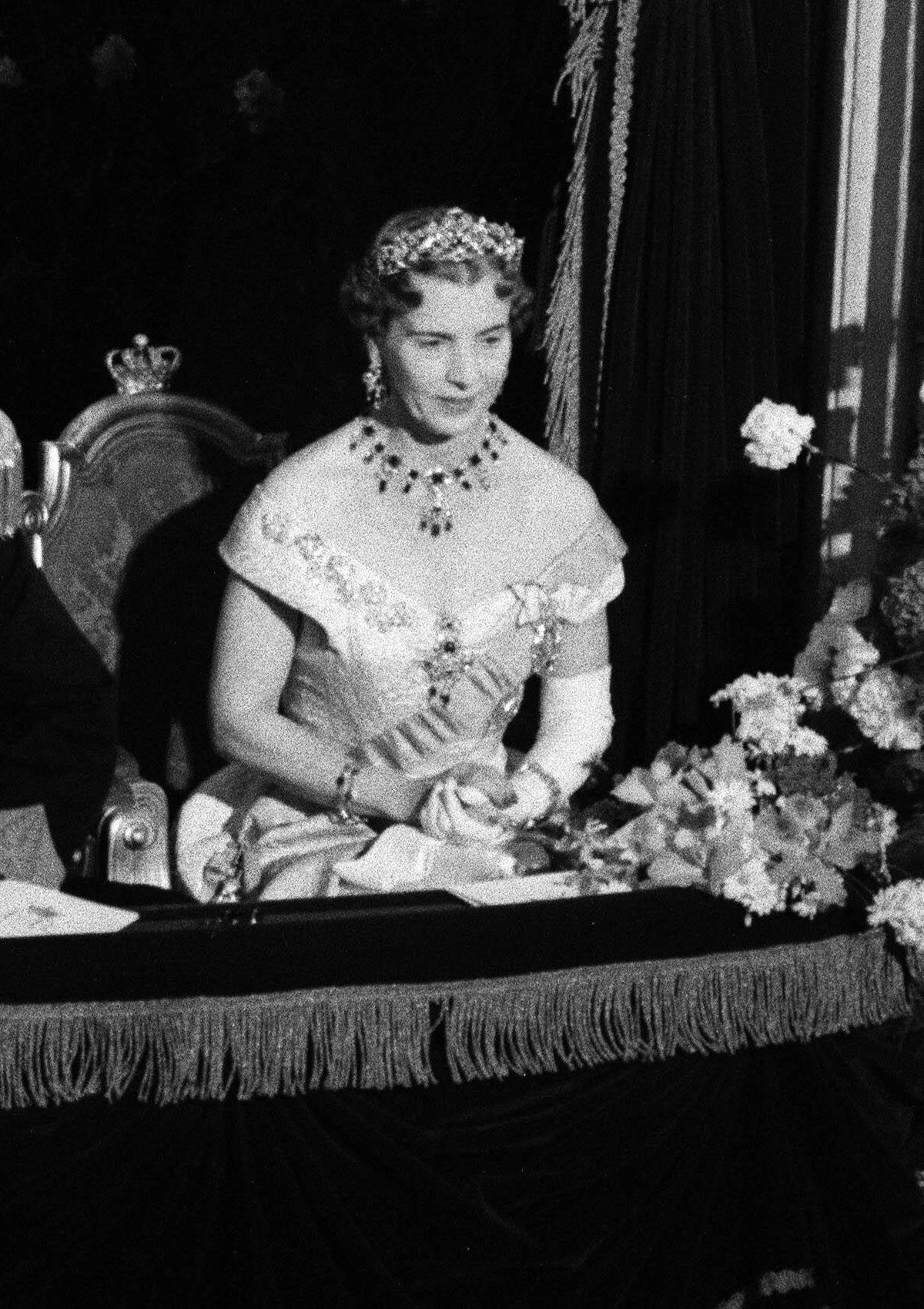
The emerald tiara and its coordinating jewels have a gorgeous ribbon motif in their design. Queen Ingrid is the first modern Queen of Denmark to make extensive use of the crown jewel collection. She often wore the emerald parure for special events in Denmark, like the 1957 state visit from Queen Elizabeth II and the Duke of Edinburgh.
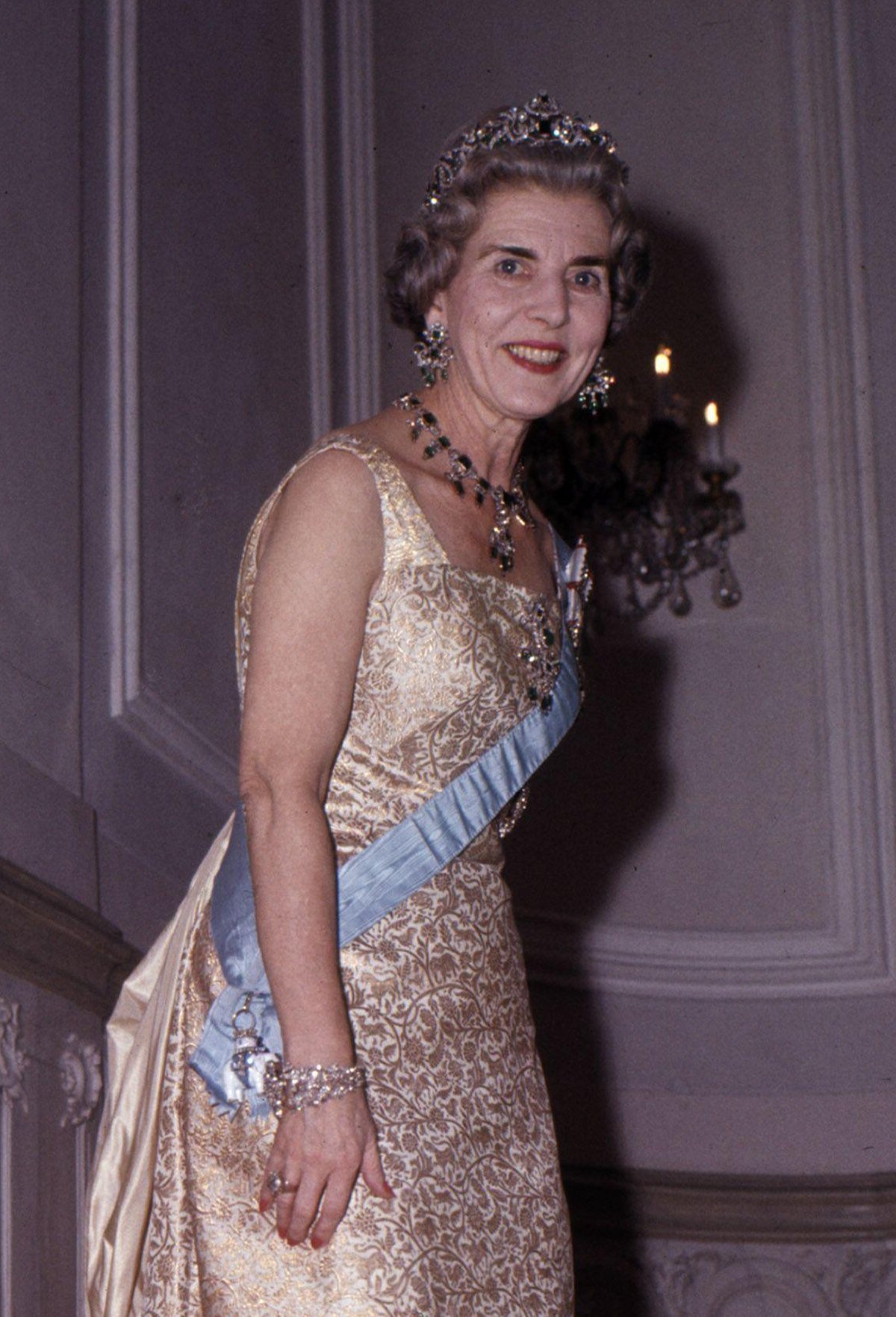
Here’s a great color photograph of Queen Ingrid wearing the emerald tiara and parure at Amalienborg in 1963. (The diamond bracelet she wears here dates to 1850, and was a wedding gift to Princess Louise of the Netherlands, Queen Lovisa’s mother, from King Oscar I of Sweden. Lovisa brought the bracelet to Denmark, and it’s now part of the Danish Royal Property Trust.)
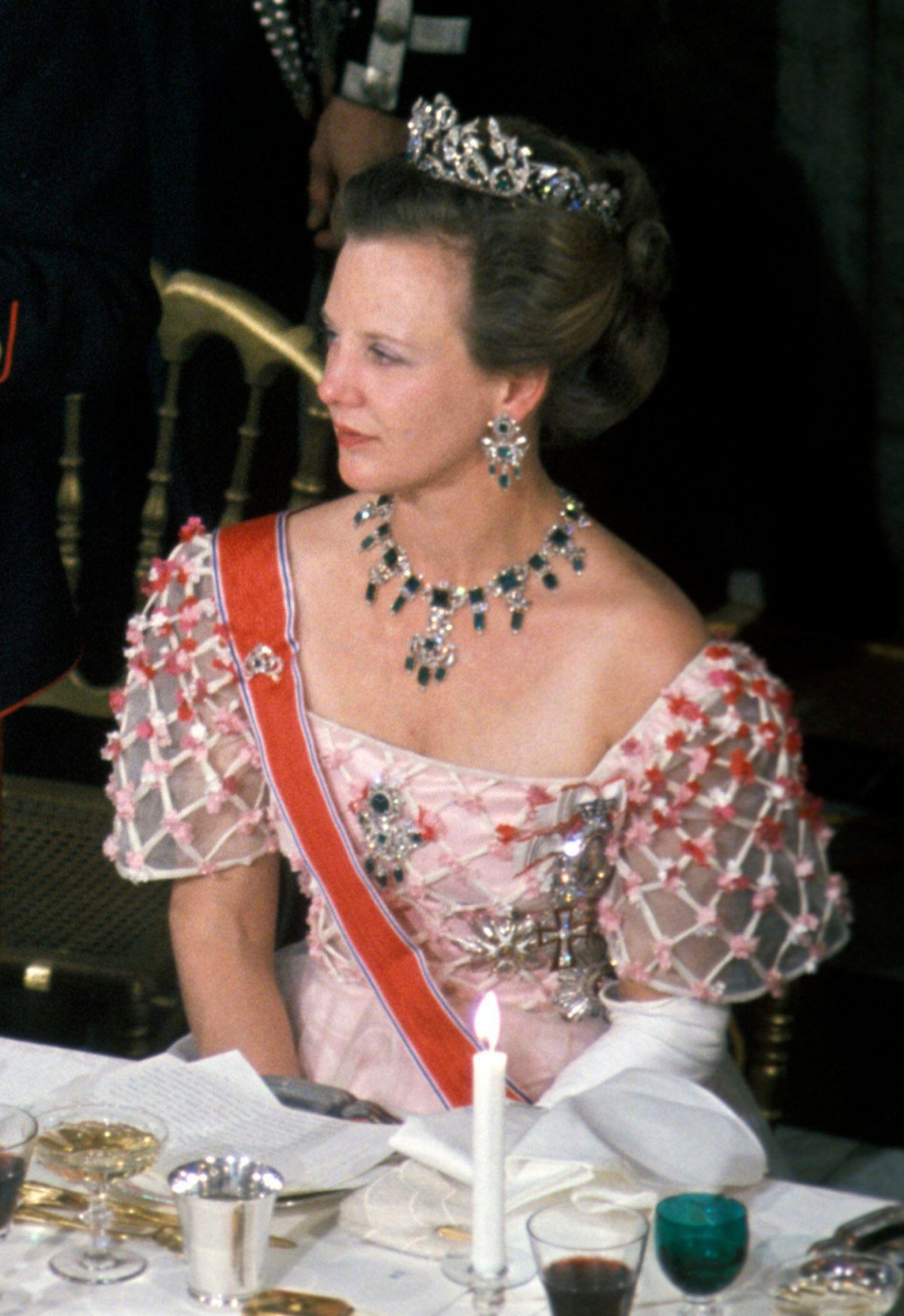
Queen Margrethe began using the crown jewels, including the emerald tiara and parure, for gala events in Denmark after her accession in 1972. Above, she wears the emeralds at Fredensborg during a state visit from King Olav V of Norway in 1974.
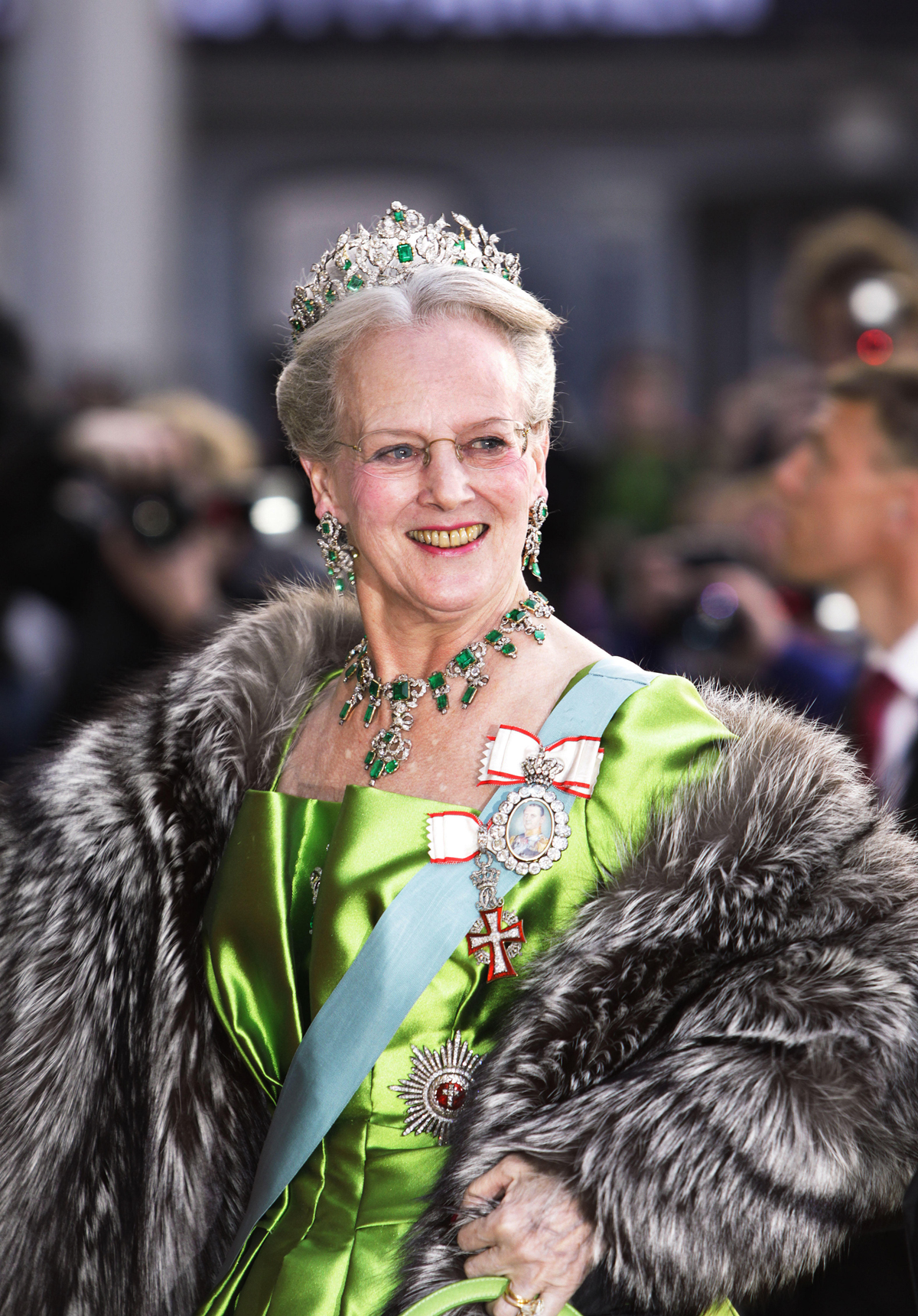
And here, she wears them for a gala concert celebrating her 70th birthday in Copenhagen back in April 2010. The pairing with one of her favorite evening gowns, a dress in a vibrant shade of grass green, was a memorable one.
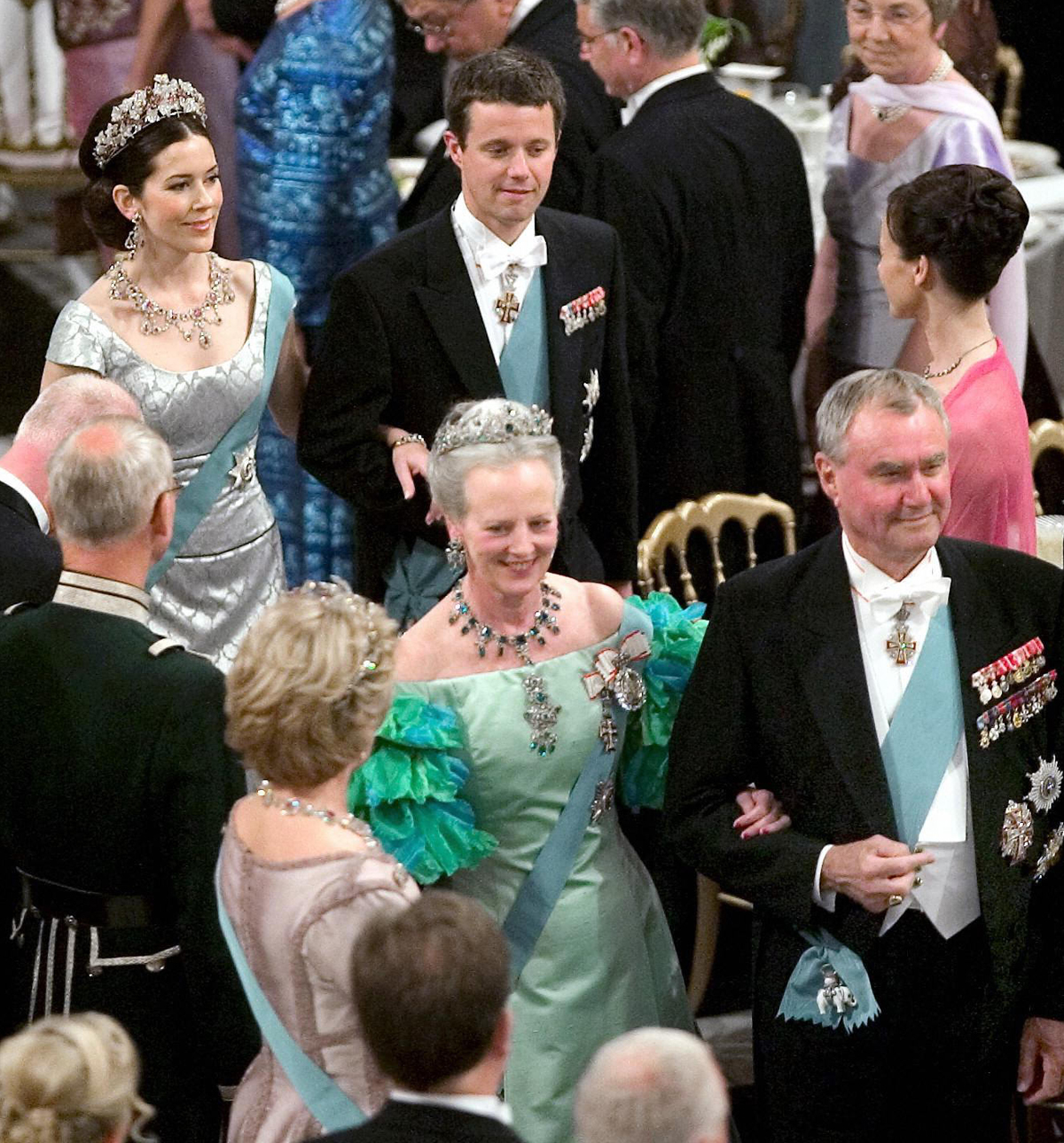
In May 2004, Margrethe wore the emeralds for a government gala dinner before the wedding of Crown Prince Frederik and Crown Princess Mary in Copenhagen. Behind her, Mary wears her spectacular ruby parure—another heirloom suite of jewels that, at least for the moment, is a personal possession rather than part of one of the jewelry trusts.
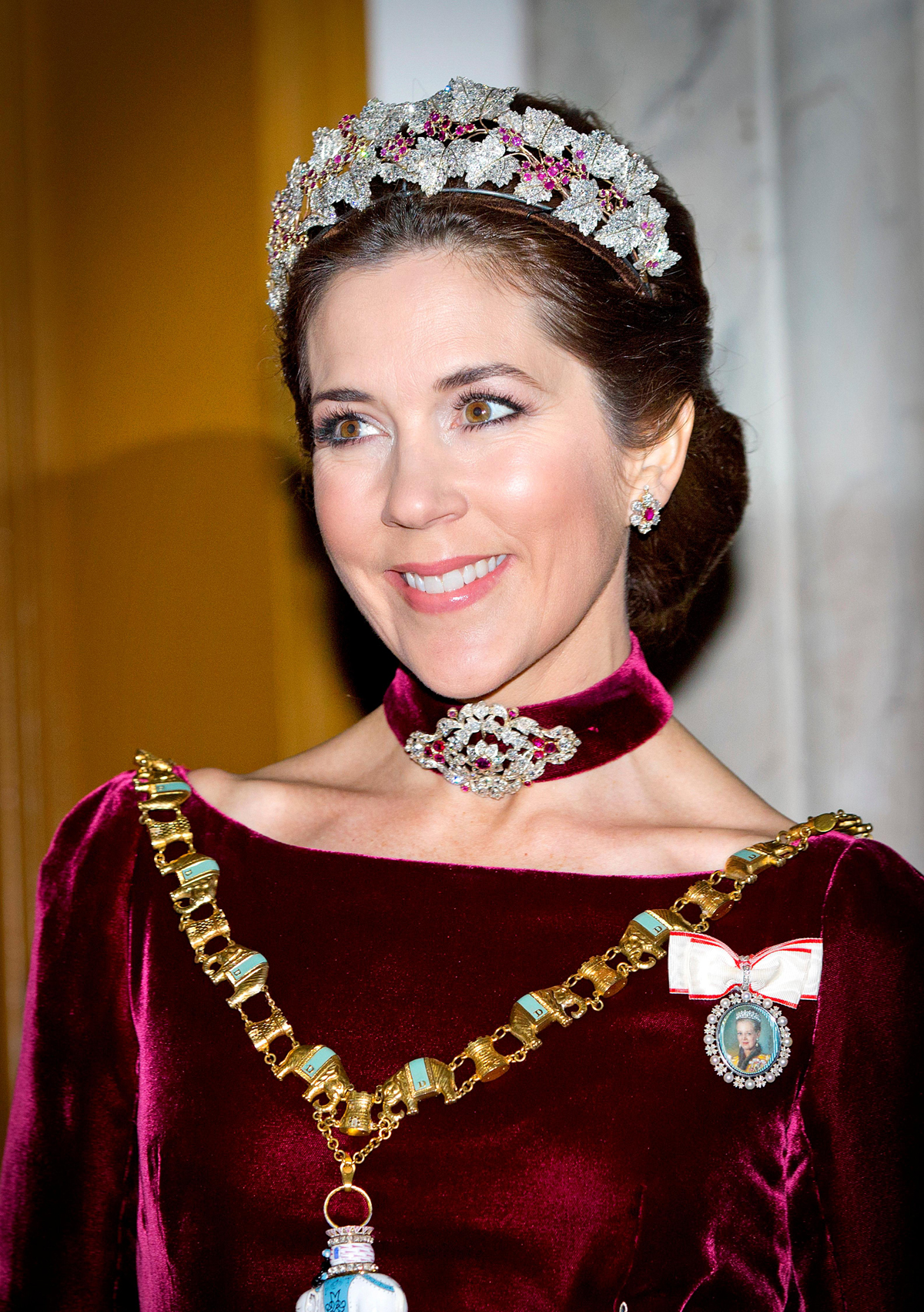
The rubies date to 1804, when they were made for Desiree Clary Bernadotte to wear at the coronation of Napoleon in Paris. After her husband became Crown Prince and then King of Sweden, Desiree’s rubies headed to Stockholm. They moved to Copenhagen with Queen Lovisa in 1869, and they’ve been in Denmark ever since. Traditionally, the suite of ruby and diamond jewels is worn by Danish crown princesses, but Queen Ingrid continued to wear the rubies after her husband’s accession, and I expect Mary to do the same.
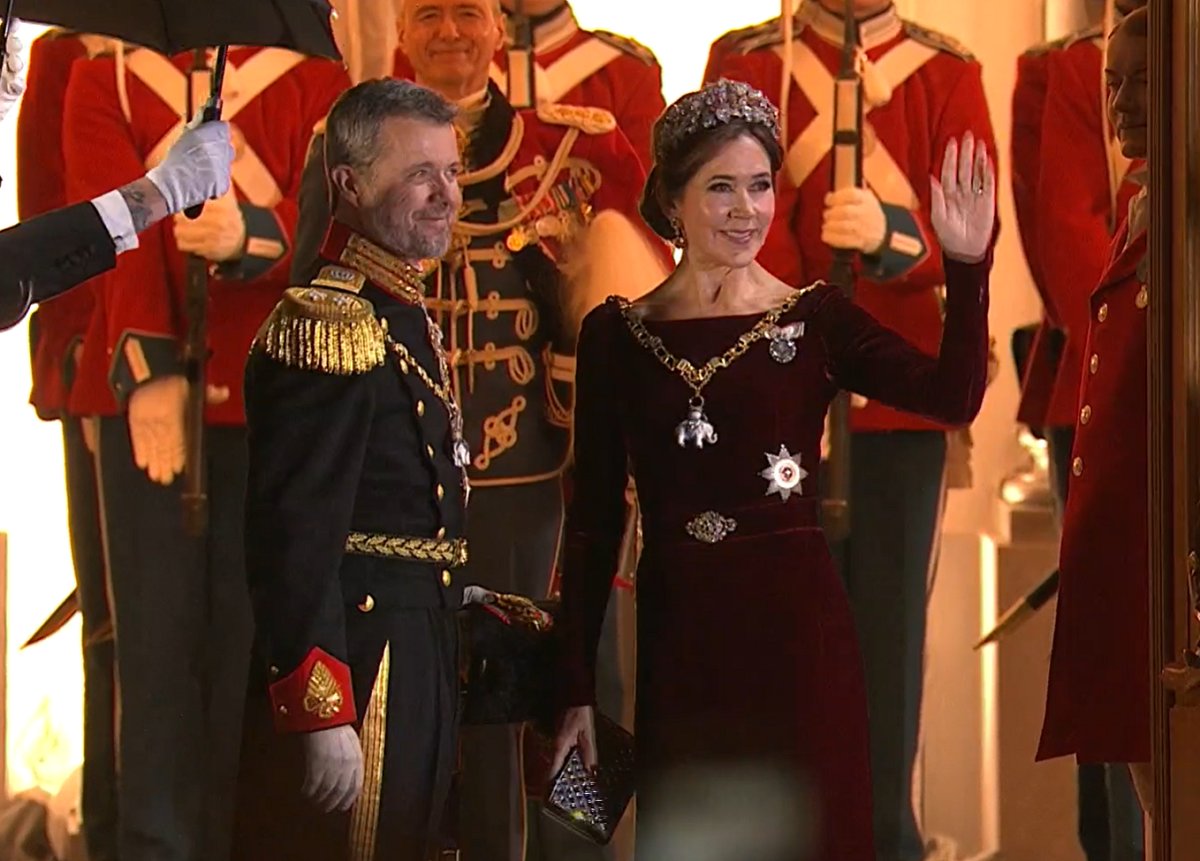
In 2000, Queen Ingrid left the ruby parure to her grandson, Crown Prince Frederik, for the use of his future wife. I wonder whether Frederik and Mary might eventually decide to place the rubies in the Danish Royal Property Trust, too—and maybe specifying that they should be worn by Crown Prince Christian’s future wife.
Want to learn more about the rest of the bejeweled parures from the crown jewel collection that Mary will soon be able to wear? Subscribe to my Substack newsletter, Hidden Gems, to read my article on the topic!
Leave a Reply
You must be logged in to post a comment.